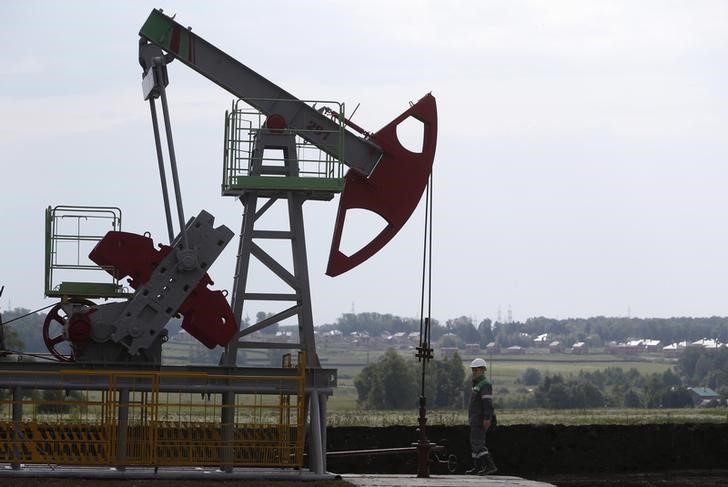Investing.com - Oil prices turned higher in North American trade on Thursday, recovering after falling sharply on the back of growing concerns over a global supply glut.
Crude oil for September delivery on the New York Mercantile Exchange tacked on 34 cents, or 0.82%, to trade at $42.05 a barrel by 13:42GMT, or 9:42AM ET, after falling to a session low of $41.10, the weakest level since August 5.
On Wednesday, New York-traded oil futures sank $1.06, 2.48%, after data showed that U.S. crude supplies rose for the third straight week.
According to the U.S. Energy Information Administration, crude oil inventories rose by a surprising 1.1 million barrels last week to 523.6 million, which the EIA considered to be “historically high levels for this time of year”.
That overshadowed a 2.8-million-barrel drop in gasoline inventories, which was much more than the expected 1.0-million-barrel decline.
WTI crude futures are nearly 18% lower from their 2016 highs above $50 a barrel scaled in early June, as signs of an ongoing recovery in U.S. drilling activity added to worries about a global glut of crude.
Elsewhere, on the ICE Futures Exchange in London, Brent oil for October delivery rose 39 cents, or 0.89%, to trade at $44.44 a barrel after touching a daily low of $43.46.
The International Energy Agency on Thursday slashed its forecast for global oil demand growth next year amid a dimmer economic outlook and warned that the "massive" stock overhang is keeping a lid on crude oil prices.
In its closely watched monthly oil market report, the Paris-based organization said it expects global oil demand to grow by 1.2 million barrels a day in 2017, a decline of 100,000 barrels a day compared with last month's forecast and down by 200,000 barrels a day from this year.
A day earlier, Brent prices lost 93 cents, or 2.07%, after data showed that Saudi Arabia boosted its output to a record high in July, adding to worries over a global supply glut.
The kingdom pumped 10.67 million barrels per day last month, a sign that OPEC's largest producer remained focused on market share rather than tackling a supply glut by curbing production.
London-traded Brent futures are down almost 15% since peaking at $52.80 in early June, as prospects of increased exports from Middle Eastern and North African producers, such as Iraq, Nigeria and Libya, added to concerns that a glut of oil products will cut demand for crude by refiners.
